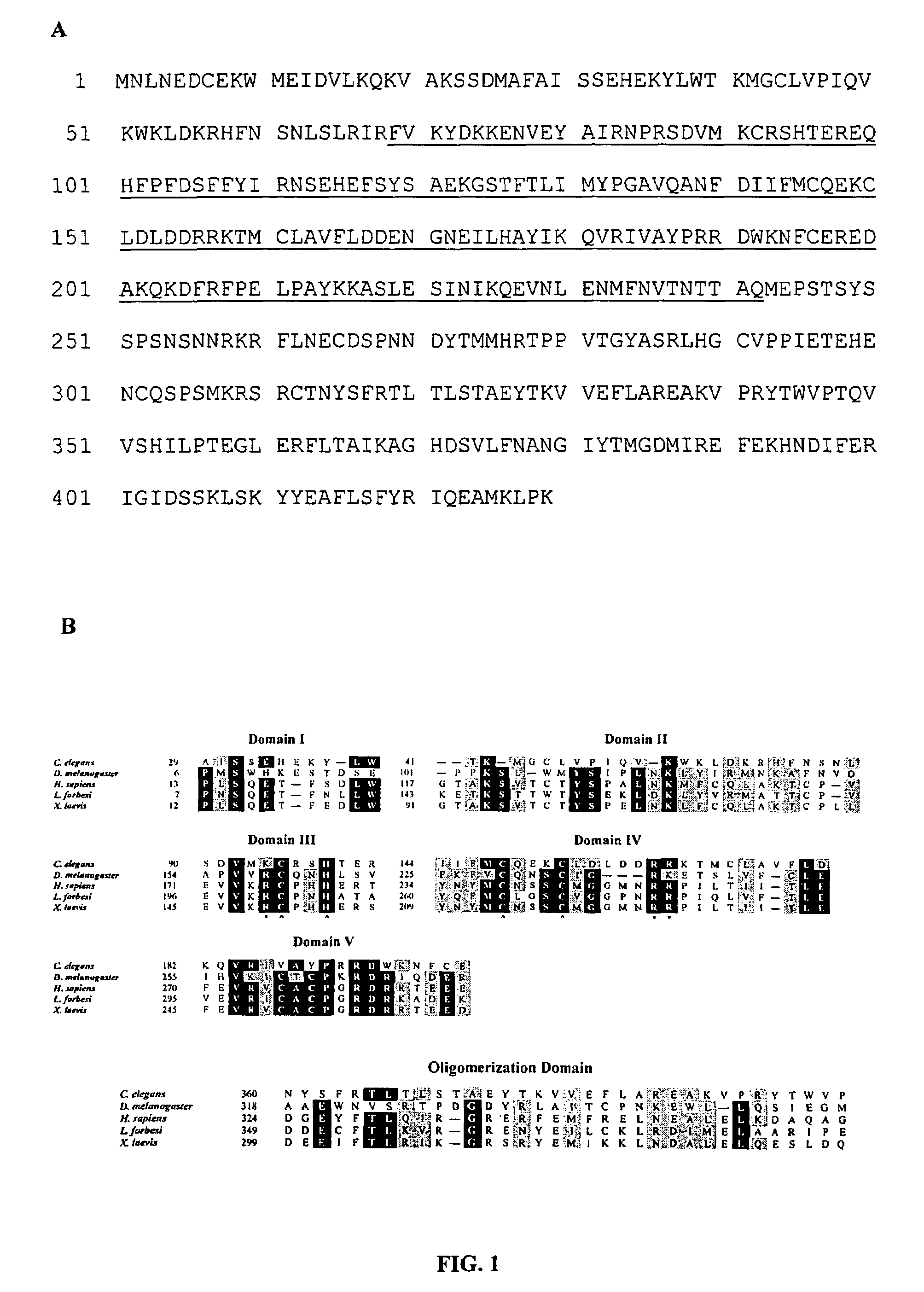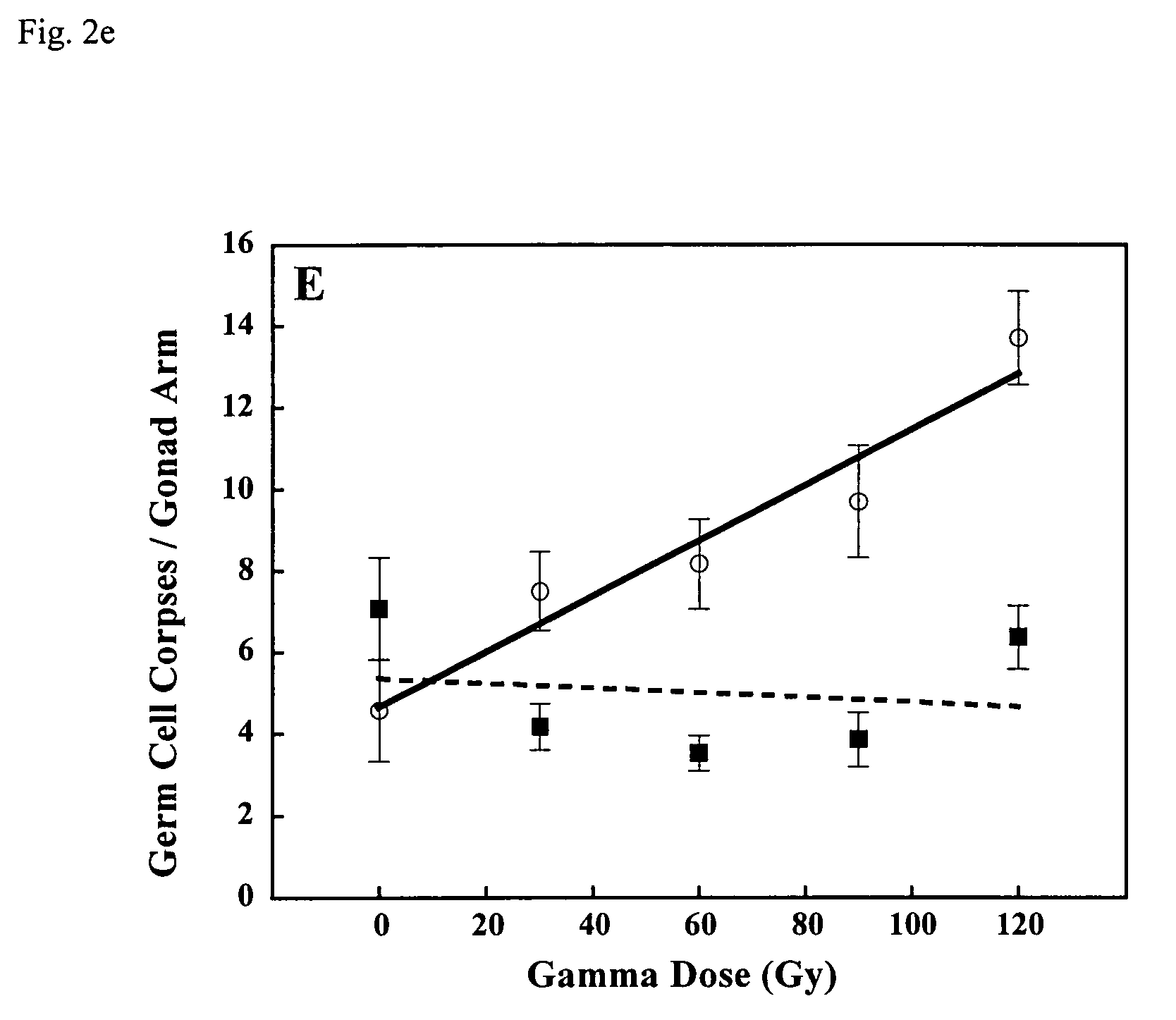Methods for identifying novel therapeutics and diagnostics in the p53 pathway
a p53 pathway and pathway technology, applied in the field of p53like gene mutations, can solve problems such as chromosome instability, and achieve the effects of reducing life span, reducing life span, and eliminating the activity of the cep-1 gen
- Summary
- Abstract
- Description
- Claims
- Application Information
AI Technical Summary
Benefits of technology
Problems solved by technology
Method used
Image
Examples
Embodiment Construction
[0026]Although based on standard searches of the C. elegans genome, it was recently suggested that C. elegans lacks a p53-like protein (G. M. Rubin et al., Science vol. 287, 2204 (2000)), we have identified a p53-like gene (referred to hereafter as cep-1) in the nematode C. elegans. Using squid p53 sequence to search the genomic database, we identified a C. elegans gene, cep-1, encoding a protein with most of the signature sequences common to the p53 family, including the residues most frequently mutated in cancers. The protein sequence of Loligo forbesi p53 (U43595) was used as a query to search the C. elegans database using the PSI-BLAST algorithm (S. F. Altschul et al., Nucleic Acids Res. Vol. 25, 3389 (1997)). Several low-scoring C. elegans open reading frames were identified and aligned with several p53 family members using the Block Maker tool (S. Henikoff, J. G. Henikoff, W. J. Alford, & S. Pietrokovski, Gene Vol. 163, 17 (1995)). F52B5.5 was the only predicted C. elegans gen...
PUM
| Property | Measurement | Unit |
|---|---|---|
| resistance | aaaaa | aaaaa |
| size | aaaaa | aaaaa |
| stress | aaaaa | aaaaa |
Abstract
Description
Claims
Application Information
 Login to View More
Login to View More - R&D
- Intellectual Property
- Life Sciences
- Materials
- Tech Scout
- Unparalleled Data Quality
- Higher Quality Content
- 60% Fewer Hallucinations
Browse by: Latest US Patents, China's latest patents, Technical Efficacy Thesaurus, Application Domain, Technology Topic, Popular Technical Reports.
© 2025 PatSnap. All rights reserved.Legal|Privacy policy|Modern Slavery Act Transparency Statement|Sitemap|About US| Contact US: help@patsnap.com



